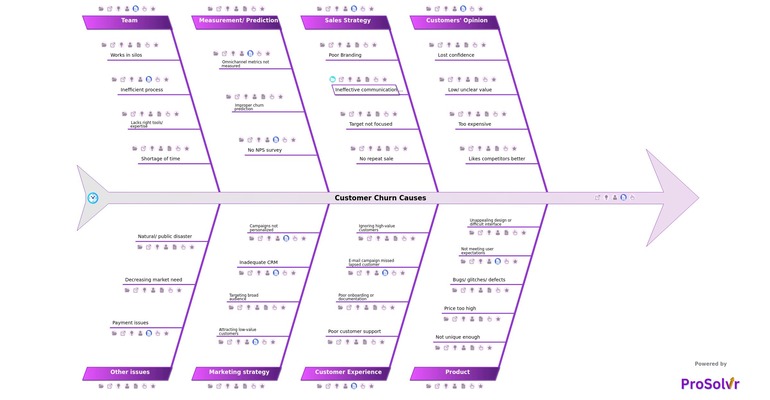Root Cause Analysis of Customer Churn
Customer churn poses a significant threat to businesses, directly impacting their revenue streams and hindering growth potential. The ability to pinpoint the root causes behind customer attrition is paramount for devising effective retention strategies. One glaring contributor to churn is subpar customer service, characterized by prolonged response times, unhelpful interactions, and overall dissatisfaction. Such experiences prompt customers to seek alternatives from competitors who prioritize and excel in service delivery.
In addition to service woes, inconsistent product or service quality stands out as a major catalyst for customer defection. Modern consumers demand reliability and excellence in the products or services they invest in. Any deviation from this expectation, be it frequent product issues or service disruptions, breeds discontent and propels customers towards brands that consistently meet their needs.
Moreover, the absence of personalized engagement and tailored communication exacerbates churn rates. In today's fiercely competitive market landscape, customers crave individualized experiences that resonate with their preferences and requirements. Failure to understand and cater to these unique needs creates a disconnect, eroding customer loyalty over time.
Furthermore, pricing strategies and perceived value play pivotal roles in customer retention efforts. Customers perpetually seek the optimal balance between cost and benefit. If they perceive that they are not receiving commensurate value for their investment or if pricing structures seem unjust, they are inclined to explore alternatives. To combat churn effectively, businesses must prioritize enhancing customer service standards, ensuring consistent quality across offerings, embracing personalized engagement tactics, and fine-tuning pricing strategies to deliver compelling value propositions. By addressing these critical areas, businesses can forge stronger customer relationships, foster brand loyalty, and ultimately mitigate churn risks.
In conclusion, understanding the myriad factors contributing to customer churn is paramount for businesses seeking sustainable growth and success. By identifying and addressing these root causes, businesses can implement targeted strategies to enhance customer satisfaction, improve retention rates, and ultimately foster long-term loyalty. Through a comprehensive approach that encompasses product quality, customer service, sales strategies, marketing efforts, team dynamics, and beyond, businesses can mitigate churn risks and cultivate strong, enduring relationships with their customer base. With a relentless focus on addressing customer needs and delivering exceptional value, businesses can position themselves for sustained growth and competitive advantage in today's dynamic marketplace.
Who should use the Customer Churn Causes template?
The Customer Churn Causes template is beneficial for any business or organization that wants to analyze and understand the factors contributing to customer attrition. It can be utilized by various departments within a company, including marketing, sales, customer service, product development, and management. Specifically, it can help:
- Marketing teams identify weaknesses in their targeting and messaging strategies.
- Sales teams recognize areas for improvement in their sales processes and customer engagement.
- Customer service teams pinpoint common issues leading to dissatisfaction among customers.
- Product development teams identify product-related issues that may contribute to churn.
- Management teams make informed decisions based on data-driven insights to reduce churn rates and improve customer retention.
Overall, any business concerned with reducing customer churn and enhancing customer satisfaction and loyalty can benefit from using the Customer Churn Causes template.
Why use the Customer Churn Causes template?
The Customer Churn Causes template serves as a valuable tool for businesses aiming to comprehend and address the factors leading to customer attrition. Its utilization offers several benefits:
- Insightful Analysis: The template enables businesses to conduct a systematic analysis of the various factors contributing to customer churn, providing valuable insights into areas that require attention and improvement.
- Cross-Departmental Collaboration: It encourages collaboration among different departments within an organization, such as marketing, sales, customer service, and product development, fostering a holistic approach to churn reduction.
- Targeted Strategies: By identifying specific pain points and root causes of churn, businesses can develop targeted strategies to mitigate these issues and enhance customer satisfaction and retention.
- Data-Driven Decision Making: The template facilitates data-driven decision-making processes by leveraging quantitative and qualitative data to prioritize and address key churn drivers effectively.
- Continuous Improvement: Through regular monitoring and analysis, businesses can continuously refine their strategies and tactics to adapt to evolving customer needs and market dynamics, fostering long-term growth and success.
The Customer Churn Causes template empowers businesses to proactively manage customer churn, cultivate stronger customer relationships, and drive sustainable business growth.
Draft and create a template for problem analysis in ProSolvr by smartQED.
Curated from community experience and public sources:








